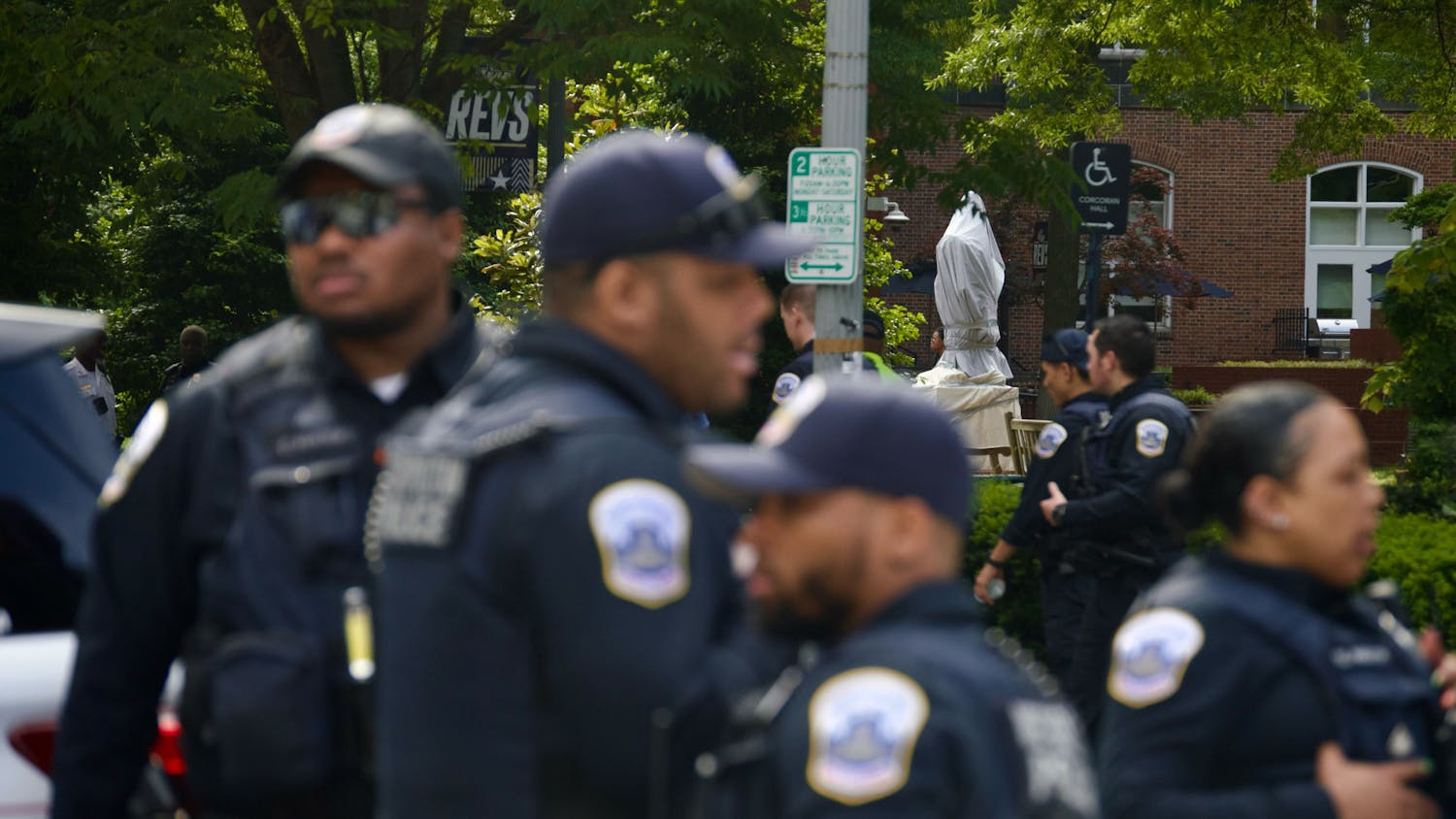Kurt Bloodsworth, the first death row inmate exonerated by DNA evidence, condemned the death penalty system in Kay Spiritual Life Center Wednesday as a part of the AU Campaign to End the Death Penalty's Awareness week,
Bloodsworth, a former Marine with no criminal history, was wrongfully convicted of raping and murdering a young girl. He lived in a cell underneath the prison's gas chamber while serving two years on death row. It was "God-awful," Bloodsworth said.
Bloodsworth described his struggles with the criminal justice system. From the start, he said, he always maintained his innocence, despite the prosecution and police's conviction that they had their man.
After being sentenced to die, he appealed his case and won a small victory two years later, when his sentence was changed from death to life without parole, based partly on prosecutorial misconduct. Bloods-worth said he continued to maintain his innocence, "carrying it around as a shield."
Bloodsworth also talked of his experiences in the prison system.
"Did you know someone can stab you with a toothbrush?" he asked the audience. His prison stories resonated with those in attendance. Dianna Marques, a junior in the Washington Semester program, called Bloodsworth "interesting and intriguing."
"Prison is not somewhere I'd like to be," she said.
Bloodsworth said he read almost 3,000 books in his nine years in prison, ranging from Stephen King to Gestalt psychological theories, which he said were "as dry as my mouth right now." The most emotional moment of the speech came when Bloodsworth paused and choked up as he recounted how his mother died three weeks before his release from prison.
It was his mother's death that caused him to stand up and fight, he said. After reading a book on DNA evidence being used to convict criminals, Bloodsworth sought to use DNA to release an innocent man. He said he still received opposition from prosecutors who claimed they could not pay for the tests and that all the DNA evidence had been accidentally destroyed.
But Bloodsworth was in luck. The judge from Bloodsworth's second trial, so upset with what Bloods-worth called "the fumbling nature of the prosecution," revealed that he kept for seven years in his chambers the underwear of the girl Bloods-worth was accused of raping.
When this information came out, Bloodsworth had the evidence he needed: a semen stain the size of a quarter. Two months after private and FBI testing found him innocent, Bloodsworth was released from prison.
He was picked up by a limousine, sent by Rock 98, a Baltimore radio station. He was given a tour of Baltimore to see all the sights he had missed in the last eight years. It seemed life was back on track for Bloodsworth, but that would not be the case.
Some still doubted his innocence, including the prosecutor of his case. Others in his Cambridge, Md., community also doubted him, he said, because some thought he had gotten out "on a technicality."
He said he received threatening phone calls late at night and his truck was defaced. A woman even ran screaming out a store with her child upon seeing him in there.
All the while, without a suspect in the case, Bloodsworth offered to pay for DNA testing that would search a federal database for other offenders. The prosecutor declined his request because she felt he was still a suspect, Bloodsworth said.
Bloodsworth lived for 10 years under a cloud of suspicion until 2003, when prosecutors finally searched the DNA database. Within 48 hours, a match was found. The suspect was arrested for the girl's murder and pleaded guilty on May 21, 2004.
Bloodsworth met his prosecutor at a Burger King to tell her that the real criminal had been identified. She had a hard time actually apologizing to him, he said, giving what he called "an anti-apology."
With the suspicion totally gone, Bloodsworth is no longer viewed as dangerous or deranged. He's had a piece of federal legislation named after him, The Kurt Bloodsworth Post-Conviction DNA Testing Program, which provides grants to states to better conduct DNA testing procedures.
After Bloodsworth told his story, John Terzano, president of the Justice Project, took the stage to address the death penalty debate in America. Terzano told the audience that a compelling story like Bloods-worth's is for naught without action.
Noting that two-thirds of Amer-icans support the death penalty, Terzano said it was more important to address the inadequacies of the system, rather than seeking the penalty's abolition.
Terzano criticized the way the criminal justice system works, including faulty police lineups, heavy reliance on a single eyewitness for testimony and using "snitch" testimony from jailhouse informers.
Because of the change in the way people have debated the capital punishment, Terzano said attitudes about the penalty are changing across the country. Because of the "'CSI' effect", as he called it, jurors now want to see DNA evidence in all murder and capital cases. This has helped lead to a four-year decline in death sentences in America, he said.
Terzano presented a policy-oriented discussion to complement Bloodsworth's personal story about his own experiences on death row. Terzano urged students to frame the death penalty debate beyond mere arguments for or against it, and to instead expand it into issues dealing with the fairness in which it is applied and the innocent lives it takes when applied incorrectly.
After the speech, students lined up to get copies of a book about Bloodsworth's life signed and to take pictures with him. "It's crazy that this is what the justice system is," said Melissa Mandel, a junior in the Washington Semester.
Sedira Banan, co-head of the AU Campaign to End the Death Penalty, was pleased with the turnout.
"I was expecting this many people," she said, "because [Bloods-worth] is a very prominent speaker. I've seen many wrongfully convicted people tell their story, and he expresses his [story] in a way that would be engaging to anyone. Also, he not only highlights the injustices in sentencing, but also in the prison system."
Bloodsworth said he did not have any opinions regarding the death penalty until his stay on death row. But after his experience, considering the 3,700 people now on death row across the nation and that 1 in 8 people sentenced to death are exonerated, Bloodsworth has formed one.
"The bus is broke, and it won't go until we fix the problem," he said. "And I don't think we can do that anymore."
Lauren Cooper, a sophomore in the College of Arts and Sciences, did not see Bloodsworth, but said that having him visit campus was good for death penalty awareness.
"I am for the death penalty in extreme cases, and I feel that the death penalty is a big part of American legal culture," Cooper said.
Calvin Beauoier, a freshman in the School of International Service, said he believes in the concept of an open campus.
"I am in favor of bringing more speakers to campus, but possibly bringing someone in favor of the death penalty would help others see a different side of the issue," he said.
The speech was part of the Campaign to End the Death Penalty's Death Penalty Awareness Week. Other events include a live chat on Thursday with Vernon Lee Evans, an inmate on death row, and a rally on Friday.




